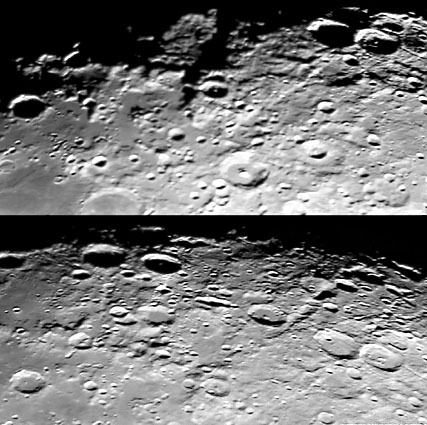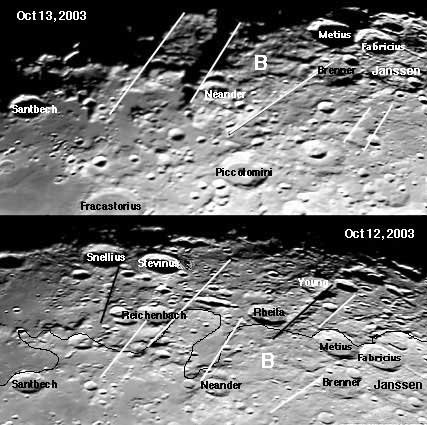July 23, 2015
Huge Fractures
Originally published July 22, 2004
Image Credit: Bob Botts |
|
Huge Fractures These images are remarkable in showing the tectonic structure southeast of Mare Nectaris. And because Bob Botts took images on successive nights of the waning Moon we can see the same area illuminated and then deeply shadowed. The area SE of Nectaris is well known for its strong and conspicuous radial basin structures. Both the Snellius and Rheita Valleys (black lines on mouseover) are large secondary crater chains caused by mountainous blocks ejected during the formation of the Nectaris impact basin. But Bott's image shows other larger dislocations of the crust also radial to Nectaris. The Oct. 13 view shows a big slab of ground (labeled B for block) that casts a shadow to the north and is bounded on the south by a long, bright line that passes through Brenner. Block B appears to be fault-bounded and higher than the surfaces to its north and south. The previous night's view (remember these are sunset images so the terminator hides land to the east every night) reveals that the low land to the north of block B is partially flat and covered with smooth material. This makes sense, for mare lavas - or other flows - would be expected in lowlands. If block B did move differentially compared to its surroundings then it is one of the largest such blocks on the Moon - except for the truly gigantic circular faults like the Apennines and Altai that define impact basins. Technical Details: Related Links: Yesterday's LPOD: Taurus-Littrow Route Map Tomorrow's LPOD: Sun, Moon and Stars |
Author & Editor: |
COMMENTS?
Register, Log in, and join in the comments.





